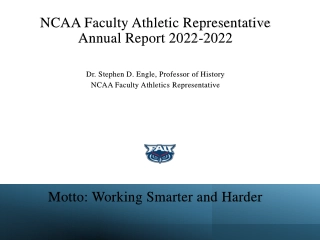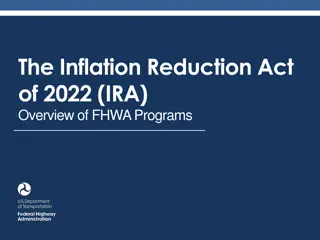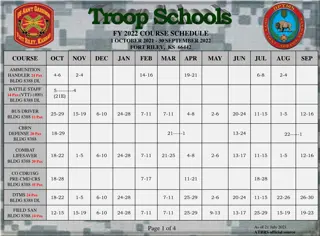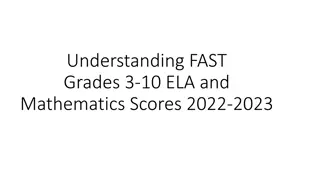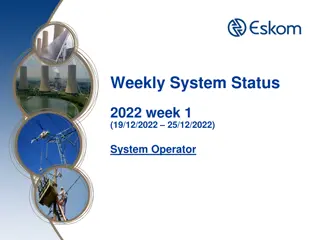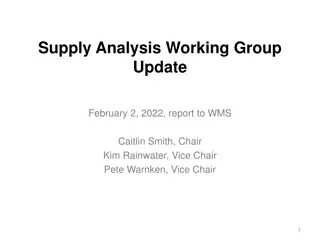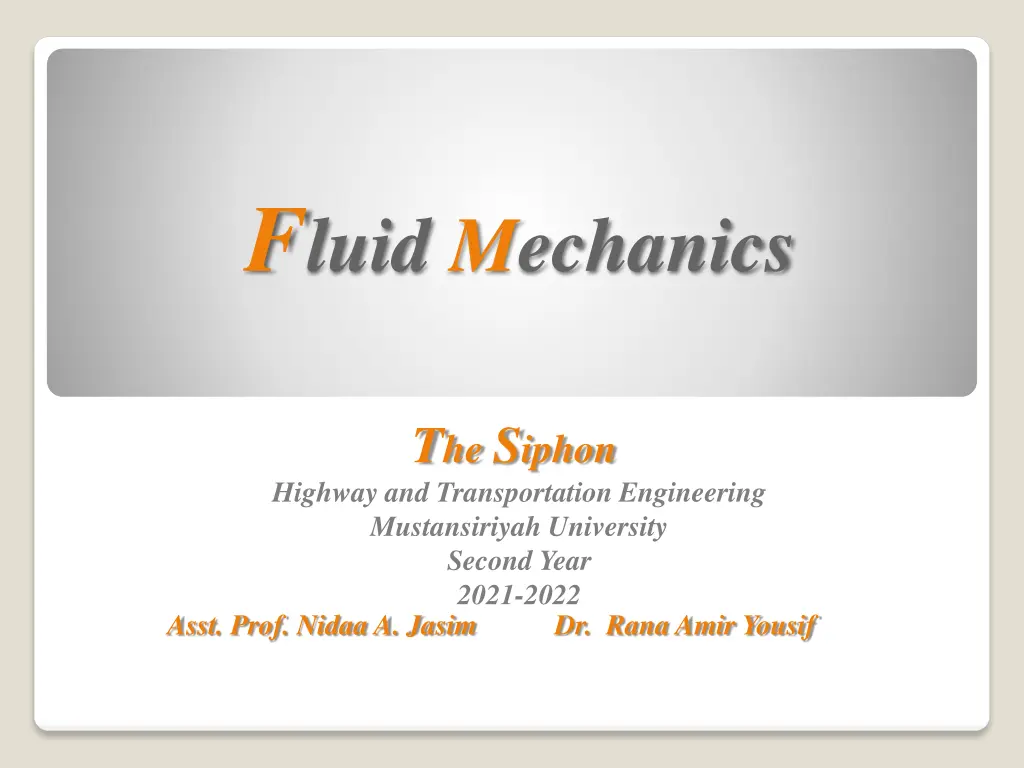
Fluid Mechanics - Siphon, Highway, and Transportation Engineering Syllabus
Explore the syllabus and examples of fluid mechanics, including properties of fluids, Bernoulli's equation, flow in pipelines, and siphon devices. References and practical applications are also provided.
Download Presentation

Please find below an Image/Link to download the presentation.
The content on the website is provided AS IS for your information and personal use only. It may not be sold, licensed, or shared on other websites without obtaining consent from the author. If you encounter any issues during the download, it is possible that the publisher has removed the file from their server.
You are allowed to download the files provided on this website for personal or commercial use, subject to the condition that they are used lawfully. All files are the property of their respective owners.
The content on the website is provided AS IS for your information and personal use only. It may not be sold, licensed, or shared on other websites without obtaining consent from the author.
E N D
Presentation Transcript
Fluid Mechanics The Siphon Highway and Transportation Engineering Mustansiriyah University Second Year 2021-2022 Asst. Prof. Nidaa A. Jasim Dr. Rana Amir Yousif
Syllabus: Introduction: Properties of fluids Archimedes theory. Atmosphere and gage pressure, measuring the fluid pressure on a point Calculating the fluid force on gates, dams. Forces consideration in fluids on inclined surfaces. Fluids in motion (Continuity & Bernoullis equations). Flow in pipeline (pressure, velocity, head). Methods for connecting the pipelines. Classification of channels at roads
References Fluid mechanics, Victor L. Streeter E. Bemjamin Wylie 7th edition ,Mc Graw Hill, 1979. Fluid Mechanics with Applications ANTHONY ESPOSITO Prentice Hall-1998
The Siphon It is a device that is used to cause a liquid to flow from one container in an upward direction downward in to a second. as shown in fig.9. Point 1 lies in the free surface in the container. Point 2 lies in the U-tube at its highest elevation. Point 3 lies in the U-tube at the lowest elevation The output at 3 is a free jet. If we apply Bernoullis eq. for pointe 1 &3 P1=P3, v1 0 , Z1-Z3=h, so V3= 2? Fig.9 So P2= (Z1-Z2)+ (-v22/2g) Q3 =A3v3
Example 9 Water is siphoned from a large storage tank through 50 mm diameter hose(fig.10). Find the maximum height H of a building over which the water can be siphoned? Solution: ?+? 12 V3= 2? V3= 2 9.8 3 =7.67 m/s V2=V3 ? 1 ?+? 12 ? 0+ 0+ 3= -98.66 1000 9800 H = 10.06 M If P2= (-98.66) KPa ? 32 2?+ Z3 ? 1 2?+ Z1 =?3 ?+ ? 22 2?+ Z2 + 2?+ Z1 =? 2 7.67^2 2 9.8+ H Fig.10
Example 10 The siphon in fig.11 is filled with water and discharged at 150 L/s, find the velocity in pipe, and the pressure at point 2? Solution: Q=V*A V= .15/ 0.22* 4 = 4.777 m/s ? 1 ?+? 12 ? 22 2?+ Z2 2?+ Z1 =?2 ?+ Fig.11 ? + 4.772 0+ 0+ 0 =?2 2 9.8+ 2 P = 31010.03 Pa
Example 11 Water is flowing upward through the pipeline (fig.12) ,a manometer measures the pressure difference p1-p1. Find the volume of flow rate? Solution: P2+ 9800*1.00 + 13.6 *9800*0.15 9800 * 0.350 = P1 P1-P2=26370 pa Z1+? 12 ? A1V1=A2V2 V2=A1V1/A2 ? = Z2 +? 22 2?+? 1 2?+? 2 Fig.12
=(400 150) 2*v1=7.11 v1 ? 2 2 ? 12 2? 7.11? 1 2 9.81 49.6? 1 2 19.6 V1=0.89 m/s Q1=A1v1=? = (Z1-Z2) + (P1-P2)/ 2 ? 1 2 = - (1-0.2) + 26370 9800 = - 0.8+2.69=1.89 m 4(0.4)2*0.86=0.108 m3/s


